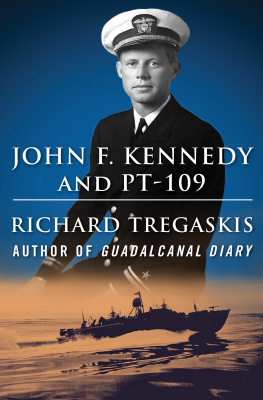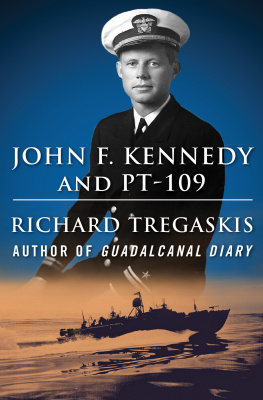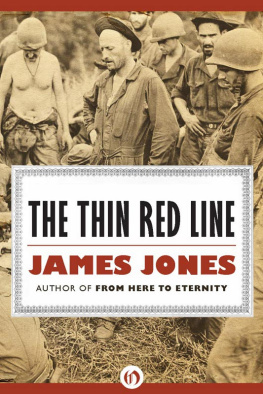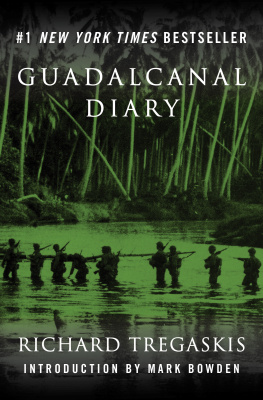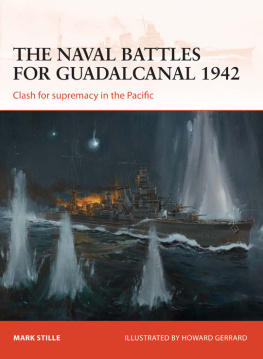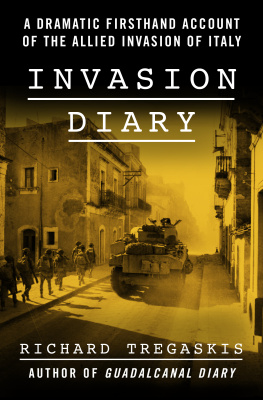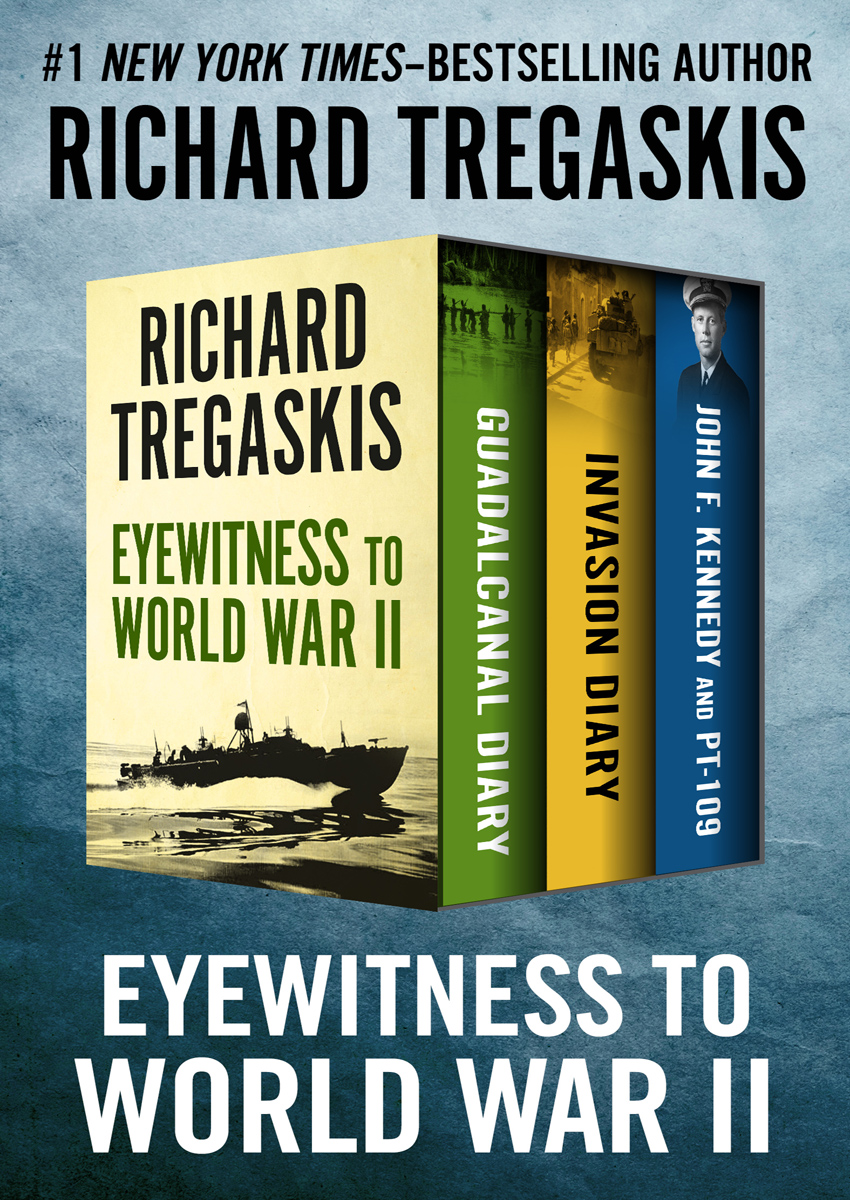Eyewitness to World War II
Guadalcanal Diary, Invasion Diary, and John F. Kennedy and PT-109
Richard Tregaskis

CONTENTS
About the Author
Richard Tregaskis (19161973) was a journalist and award-winning author best known for Guadalcanal Diary (1943), his bestselling chronicle of the US Marine Corps invasion of the Solomon Islands during World War II. Born in Elizabeth, New Jersey, Tregaskis graduated from Harvard University and reported for the Boston American before joining the International News Service. Assigned to cover the Pacific Fleet operations after Pearl Harbor, he was one of only two reporters to land with the Marines on Guadalcanal Island. His dramatic account of the campaign was adapted into a popular film and became required reading for all Marine Corps officer candidates. Invasion Diary (1944) vividly recounts the Allied invasions of Sicily and Italy and Tregaskiss brush with death when a chunk of German shrapnel pierced his skull. Vietnam Diary (1963) documents the increased involvement of U.S. troops in the conflict between North and South Vietnam and was awarded the Overseas Press Clubs George Polk Award. Tregaskiss other honors include the Purple Heart and the International News Service Medal of Honor for Heroic Devotion to Duty. He traveled the world many times over, and wrote about subjects as varied as the first space ship (X-15 Diary, 1961), John F. Kennedys heroism during World War II (John F. Kennedy and PT-109, 1962), and the great Hawaiian king Kamehameha I (Warrior King, 1973). On August 15, 1973, Tregaskis suffered a fatal heart attack while swimming near his home in Hawaii. After a traditional Hawaiian funeral, his ashes were scattered in the waters off Waikiki Beach.
All rights reserved, including without limitation the right to reproduce this ebook or any portion thereof in any form or by any means, whether electronic or mechanical, now known or hereinafter invented, without the express written permission of the publisher.
Guadalcanal Diary copyright 1943 by Richard Tregaskis
Invasion Diary copyright 1944 by Richard Tregaskis
John F. Kennedy and PT-109 copyright 1962 by Richard Tregaskis
Cover design by Amanda Shaffer
ISBN: 978-1-5040-4753-1
This edition published in 2017 by Open Road Integrated Media, Inc.
180 Maiden Lane
New York, NY 10038
www.openroadmedia.com

Guadalcanal Diary
C ONTENTS
I NTRODUCTION
by Mark Bowden
War makes for great stories. It by definition involves matters of historical importance, and it is rivaled by few events in life for drama. It sounds mercenary for a writer to say so, but it has always been true. Stories about battle have been popular and significant since before language was written. Even poor accounts of itself-serving memoirs, bald propagandaoften make for compelling reading, because the deeds of war, the cruelty and self-sacrifice, the cowardice and heroism, are enacted at such extremes of human experience that they ultimately transcend the words that describe them. The very best stories of war tend to come from writers who understand this, who know their place, who recognize that the struggle they observe and record carries a great deal more weight than their account of it ever will. Abraham Lincoln touched on this when he spoke at Gettysburg, The world will little note, nor long remember what we say here, but it can never forget what they did here. We have long remembered, of course, what Lincoln said, but even his immortal words carry less weight than the deeds of the men who fought and died. The great thing about words, however, is that they enable memory.
Remembrance is the least we owe those who accomplished heroic deeds. Their stories are needed not only to inspire warriors who will be called upon to fight in the future, but to inspire us all with the best kind of national pride. In the words of the dying captain at the end of Saving Private Ryan, we are called upon to earn this.
During World War II, America fought a famous series of vicious battles against the Japanese on islands in the Pacific. Richard Tregaskis went along as a war correspondent for the first of those battles, on the island of Guadalcanal, and wrote an accounthis bestselling Guadalcanal Diarythat stands today as one of the best of its genre. Downplaying his own extraordinary heroism, writing with great fairness and restraint, Tregaskis shaped Americas understanding of the war, and influenced every account that came after, fiction or nonfiction, from Norman Mailers The Naked and the Dead to the 1998 film version of James Jones The Thin Red Line. Tregaskis described for the first time the look and feel and smell of the Pacific War, the oppressive tropical heat and humidity that caused rashes and strange fungi to appear on mens bodies, the terror of fighting in tall grass and in jungles against an often invisible enemy that burrowed deep in the earth and vowed a fight to the death, the odd transformation of paradisiacal Pacific landscapes into hell itself. Tregaskis brought to life the horror of that fighting, but also the inspiring camaraderie of men at war, the humorous details of life in a combat zone, the peculiar juxtaposition of the macabre and the mundane. He demystified this strange new ground war. His account revealed the hardened, professional Japanese suicide warriors of legend to be merely human, cunning, determined fightersmen vulnerable to American artillery and infantry. Above all, Tregaskis captured the stoic young Americans who calmly boarded landing crafts, knowing that probably one in four of them would be killed. His diary captured the inspiring determination and courage of typical young Americans in 1943, a motley racial and ethnic mix, who would prove to be more than a match for the fierce Japanese.
It is hard to imagine today how important this book was when it appeared in that year, just months after the fighting it describes. The fighting in Guadalcanal was the beginning of the land offensive against Japan. Today we know all about the island-hopping strategy that, together with even more important air and sea battles, gradually stripped away Japans control of the Pacific Ocean and crushed its empire. Then, nothing was certain. The U.S. Navy had won a decisive battle in June in waters off Midway Island, but sea battles merely set the stage for the grim series of island invasions. As of August of that year, Americans had known only defeat on land against the Japanesethe ignominious flight of General Douglas MacArthur from the Philippines, the humiliating surrenders of Bataan and Corregidor. This book recorded a turning point. America was striking back.
But the diary records much more than a first American land victory. When it was published, no one yet knew what this new war was going to be like. The Allies had not yet landed on Normandy to begin the big push against Hitler, and although American soldiers had seen plenty of action already in Africa, and just weeks before had invaded Sicily, there was something especially daunting about invading a small island in a vast ocean, where neither side could readily abandon the field. What sort of enemy were these Japanese? What kind of weapons and strategies would they employ? Why were these dangerous islands with strange names halfway around the world suddenly so important? What had we gotten into?

